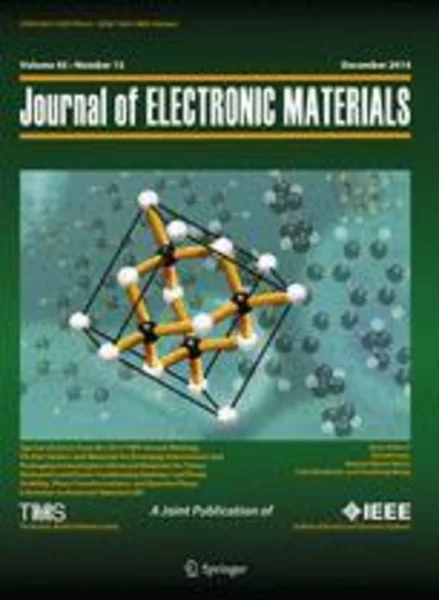-
mechanisms of creep deformation in pure sn solder joints
جزئیات بیشتر مقاله- تاریخ ارائه: 1392/07/24
- تاریخ انتشار در تی پی بین: 1392/07/24
- تعداد بازدید: 812
- تعداد پرسش و پاسخ ها: 0
- شماره تماس دبیرخانه رویداد: -
the work reported here concerns the creep of pure sn solder joints with cu metallization (cu||sn||cu). steady-state creep tests in shear are combined with electron backscatter diffraction (ebsd) analysis of the evolution of the microstructure during creep to clarify the deformation mechanism and the nature of the microstructural evolution. the creep behavior of the joint changes significantly with temperature. at low temperature (65°c), two distinct creep mechanisms are observed. low-stress creep is apparently dominated by grain boundary sliding, as evidenced by the low stress exponent (n ≈ 4), low activation energy (q ≈ 42 kj/mole), and significant grain rotation during creep. high-stress creep is dominated by bulk deformation processes, evidenced by a high stress exponent (n ≈ 9), an activation energy like that for bulk diffusion (q ≈ 70 kj/mole), and a relatively fixed microstructure. at high temperature all aspects of its behavior are consistent with deformation by bulk creep mechanisms; the stress exponent and activation energy are high (n ≈ 5 to 7, q ≈ 96 kj/mole), and despite significant grain coarsening, the microstructure retains (and strengthens) a fixed [001] texture. the results suggest that a “segmented” constitutive equation of dorn type is most suitable for the low-temperature behavior, while a “hyperbolic” constitutive equation may be preferable at high temperature.
مقالات جدیدترین رویدادها
-
استفاده از تحلیل اهمیت-عملکرد در ارائه الگوی مدیریت خلاقیت سازمانی و ارائه راهکار جهت بهبود
-
بررسی تاثیر ارزش وجوه نقد مازاد بر ساختار سرمایه شرکت های پذیرفته شده در بورس اوراق بهادار تهران
-
بررسی تأثیر سطح افشای ریسک بر قرارداد بدهی شرکت های پذیرفته شده در بورس اوراق بهادار تهران
-
بررسی تأثیر رتبه بندی اعتباری مبتنی بر مدل امتیاز بازار نوظهور بر نقد شوندگی سهام با تأکید بر خصوصی سازی شرکت ها
-
تأثیر آمیخته بازاریابی پوشاک ایرانی بر تصویر ذهنی مشتری پوشاک ایرانی (هاکوپیان)
-
روانشناسی رنگ در بیمارستان ها
-
اثر تزریق داخل بطن مغزی سیلی مارین بر مصرف تجمعی خوراک در جوجه های گوشتی محروم ازغذا در دوره پایانی
-
آنژین قلبی و گرفتاری شدید آئورت در هیپرکلسترولمی فامیلیال هموزیگوت – گزارش یک مورد نادر- پسربچه 10 ساله
-
high yield production of d-xylonic acid from d-xylose using engineered escherichia coli
-
performance of friction damper for dynamic response reduction of seismically excited knee braced steel frames
مقالات جدیدترین ژورنال ها
-
مدیریت و بررسی افسردگی دانش آموزان دختر مقطع متوسطه دوم در دروان کرونا در شهرستان دزفول
-
مدیریت و بررسی خرد سیاسی در اندیشه ی فردوسی در ادب ایران
-
واکاوی و مدیریت توصیفی قلمدان(جاکلیدی)ضریح در موزه آستان قدس رضوی
-
بررسی تاثیر خلاقیت، دانش و انگیزه کارکنان بر پیشنهادات نوآورانه کارکنان ( مورد مطالعه: هتل های 3 و 4 ستاره استان کرمان)
-
بررسی تاثیر کیفیت سیستم های اطلاعاتی بر تصمیم گیری موفق در شرکتهای تولیدی استان اصفهان (مورد مطالعه: مدیران شرکتهای تولیدی استان اصفهان)
-
مقدمه ای بر تحلیل هرمنوتیک و مفهوم آن در معماری
-
بررسی رابطه بین مهارت های ارتباطی و کیفیت زندگی دبیران
-
تحلیلی بر بزهکاری اطفال و نوجوانان در پرتو نظریه معاشرت ترجیحی و تعامل نمادین
-
problem of irony and intertextuality
-
a review on form a visual test of torrance creativity test in iran




سوال خود را در مورد این مقاله مطرح نمایید :